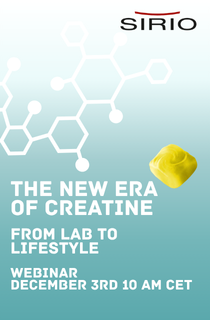November in review: GLP-1 breakthroughs, UPFs under fire, Novonesis advances healthy longevity
Key takeaways
- GLP-1 science, product pipelines, and consumer acceptance reached a pivotal point in November, reshaping nutrition, pharma, and metabolic health.
- Industry leaders highlighted the importance of resilient supply chains, sustainability, and science-backed solutions for longevity and microbiome health.
- Global policy discussions — from UPF regulation to CITES enforcement and US SNAP reform — underscore the need for reevaluation of nutrition, trade, and public health systems.
November’s highlights include a spike in global debates over ultra-processed foods (UPFs), US nutrition assistance, Nestlé’s dismissal of added sugar accusations in infant cereal, and our talk with TRAFFIC on the international trade in wild-collected plants.
In our November review, Nutrition Insight highlights some of the month’s biggest stories, including breakthrough GLP-1 research and drug development, our discussion with AAK on the impact of supply chains on nutrition innovation, and Novonesis’ latest insights into microbiome-focused healthy longevity innovations.
In addition, key industry players told us the active nutrition market is exploring plant-based alternatives to meet sustainability demands from consumers. We also explored women’s health, longevity, and GLP-1 complementary solutions presented at SupplySide Global this year, while AG1 and UC Davis experts told us how they aim to advance metabolic health.

New GLP-1 science and drugs reach “tipping point,” reshaping health and nutrition
Emerging science and drug product development are poised to transform the US GLP-1 landscape, potentially increasing the adoption of these medications even further. We met with experts at the University of California (UC) Davis, US, to discuss how researchers explore organs beyond the gut that secrete GLP-1, as the brain and pancreatic alpha cells also produce this hormone. The experts shared how the pharmaceutical pipeline expands into new health indications, combinations of GLP-1 with other hormones, and more convenient delivery formats, while Ozempic, a semaglutide-based medication, is set to go off patent in several countries next year. Meanwhile, a UK survey revealed a growing acceptance of these medications among adults.
AAK: Stronger supply chains and disruptive tech are crucial for future nutrition innovation
Amid the current volatile macroeconomic environment, preparing for shifts in supply chains is essential for any industry. For nutrition, this means ensuring people can still access healthy foods during uncertain times, drive innovations in transformative technologies, and prioritize environmental sustainability. We discussed AAK’s approach to nutrition innovation with its global head of R&D. He told us that trends in health, nutrition, and supply chain resiliency and diversification will persist in the coming years, urging the industry to be better prepared for these developments. He pointed to fermentation as a promising industrial tool for long-term impact and highlighted opportunities to explore the understudied health benefits of lipids. PharmaLinea’s marketing director, Masaž Ambrožic, highlighted innovations in hydration and women’s health at CPHI 2025.
PharmaLinea’s marketing director, Masaž Ambrožic, highlighted innovations in hydration and women’s health at CPHI 2025.
Novonesis leverages the microbiome for next-gen healthy longevity solutions
Experts highlight that through technological, medicinal, and nutritional innovations, we are consistently living longer than any generation before. At the same time, the science behind gut health continues to advance as experts unlock the secrets of the gut microbiome. According to Novonesis, the intersection of these two trends presents a plethora of opportunities within the healthy aging space. We met with two Novonesis experts to unpack the latest insights in aging microbiology, consumer attitudes, and practical innovations for the next generation of solutions. The team coined the term “healthy longevity,” to focus on vitality, independence, and emotional well-being alongside physical health as people age. We also discussed HMO science advances with Novonesis, as emerging research has sparked renewed interest in these compounds for systemic health benefits.
As global policymakers and healthcare advisers move to curb ultra-processed foods (UPFs), The Lancet has published a series outlining policy recommendations to regulate and reduce these products, underscoring that education and consumer-focused behavioral shifts are insufficient. However, medical and nutrition experts criticized the reports’ reliance on the Nova system to classify UPFs, which was developed by one of the series’ co-authors. They argued that the framework is oversimplified and called on regulators to consider foods’ nutritional profiles and metabolic impact. The series called on governments to reduce UPF consumption and prioritize local food producers, pointing to research on the increase in lower-quality diets high in UPFs. At the same time, another study linking UPF consumption to early-onset colorectal cancer in women was contested as experts said the study showed an association, not causation. At SupplySide Global 2025, we met with ADM to discuss the company’s strategy for mainstream functional foods and GLP-1 diets.
At SupplySide Global 2025, we met with ADM to discuss the company’s strategy for mainstream functional foods and GLP-1 diets.
Nestlé fires back at accusation of adding sugar to infant cereal in Africa
Nestlé has disputed accusations by the NGO Public Eye that its infant cereals sold in Africa feature added sugar. Recent reports by the NGO claimed the Swiss nutritional company’s brands Cerelac and Nestum sold in Africa contain added sugar, while the same products on the European market are free of refined sugar. We discussed the reports with Nestlé, which stated that the report contains misleading and unfounded allegations, and emphasized that the brand maintains a consistent approach to nutrition across all countries. Meanwhile, Public Eye told us that the NGO worked with partners in 20 countries to analyze products’ sugar content. Each Cerelac product contained nearly 6 g of added sugar per serving, with the highest average level at 7.3 g per serving.
CITES CoP20: TRAFFIC calls for improved awareness and enforcement in plant medicine trade
At the 20th Conference of the Parties (CoP20) to the Convention on the International Trade in Endangered Species of Wild Fauna and Flora (CITES), 185 members gathered in Uzbekistan to ensure international trade in wild species is sustainable, legal, and traceable. While trade in wild animals receives considerable public attention, the NGO TRAFFIC has cautioned that trade in wild plants may be overlooked. Based on recent data, the NGO reported that plant-derived medicinals comprised the largest share of CITES-related seizures, often due to a lack of accompanying permits, which are required for legal trade in these species. TRAFFIC experts told us that there is a lack of awareness among buyers regarding CITES permit requirements and highlighted several challenges in enforcing the Convention. This intergovernmental agreement aims to ensure that international trade in more than 40,000 species of wild plants and animals does not threaten their survival. Prague-based biotech company BeneMeat said the company is trialing dog treats with cultivated hamster cells.
Prague-based biotech company BeneMeat said the company is trialing dog treats with cultivated hamster cells.
SNAP reform: Six decades of US nutrition assistance policy reveals what works and what doesn’t
An analysis of the US Supplemental Nutrition Assistance Program (SNAP) has assessed six decades of policy changes to inform the best course of action for significantly combating food insecurity. The authors analyzed the impact of proposed changes to SNAP in the recently passed “Big Beautiful Bill,” considering legislative changes, economic evidence, and political debates. They noted that SNAP is most effective when it simplifies enrollment and provides adequate benefits tailored to local food costs. The authors at Cornell University, US, also determined that policies restricting food choices are generally ineffective and decrease program participation, while expanding work requirements risks substantially increasing food insecurity with minimal employment gains. Meanwhile, the longest US government shutdown halted SNAP benefits in November.
“Good science is good business”: AG1 and IIFH partnership to advance metabolic health
The Innovation Institute for Food and Health (IIFH) at UC Davis partnered with AG1 to accelerate product development for nutrition and metabolic health innovations and commercialize research discoveries. The partnership aims to bridge the gap between academia and industry by developing science-based nutritional innovations for improved metabolic health. The CEO of AG1 and the director of IIFH told us that the partners will combine IIFH and UC Davis’ leading science, including advanced omics analytics, with AG1’s market awareness, commercial insights, and product development experience. The organizations have not yet specified focus areas in metabolic health, as this underpins many health benefits. Moreover, the experts argued that science is at a transition point in the food system, driven by GLP-1 medications and nutrient consumption levels for optimal health. We met with a researcher at the UK University of Nottingham who is blending vitamins with pro- and prebiotics for immunity and metabolic health.
We met with a researcher at the UK University of Nottingham who is blending vitamins with pro- and prebiotics for immunity and metabolic health.
Plant-based eating gains ground as active nutrition embraces sustainability
The active nutrition market is moving beyond athletes to include regular consumers. With more environmentally conscious consumers demanding high-quality, efficacy, and convenient supplement formats, manufacturers are developing solutions to meet these demands. We explored how the industry is developing next-gen, sustainable, plant-based active nutrition with Bioiberica, Cosun Protein, Gnosis by Lesaffre, HTBA, Lactalis Ingredients, Sensus, and Sirio Europe. The companies told us that there was an interest in plant-based proteins due to sustainability demands and a growing price volatility in dairy ingredients. Meanwhile, they said that the taste and texture of these alternatives remain a challenge, especially in beverages. The experts also emphasized the importance of balancing sustainability with transparency, safety, and efficacy.
SupplySide Global 2025: Targeted solutions for women’s health, longevity and GLP-1 complements
At this year’s SupplySide Global 2025 in Las Vegas, Nevada, US, exhibitors highlighted targeted women’s health solutions, solutions to meet the healthy longevity trend, and formulations for consumers using weight management medications, such as GLP-1 receptor agonists. Several companies highlighted how science and personalization are shaping the next wave of nutritional innovation. We spoke with experts from Lallemand Health Solutions, Novonesis, and Kerry about how scientific advancements and personalized approaches are shaping future product development. They highlighted targeted probiotics for women’s health across life stages, healthy aging solutions, as consumers rate longevity as very important, and the importance of supporting GLP-1 users in offering solutions to manage side effects. We also discussed the convergence between the pharmaceutical and nutraceutical industries at the CPHI 2025 trade show in Frankfurt, Germany, with PharmaLinea, Lubrizol, Sirio, Corbion, and Bioiberica.

















